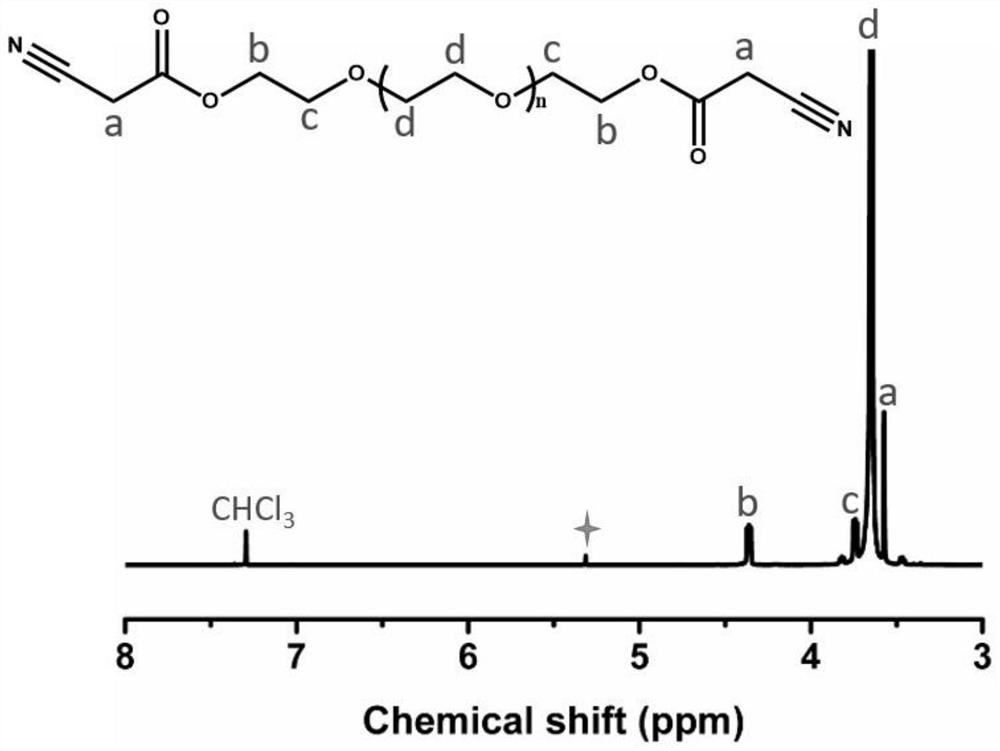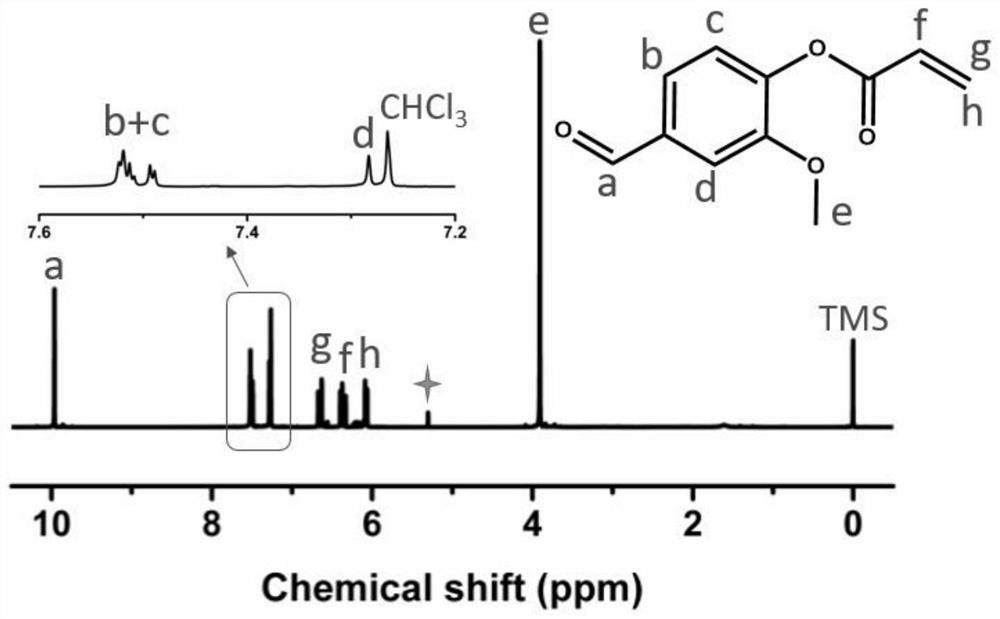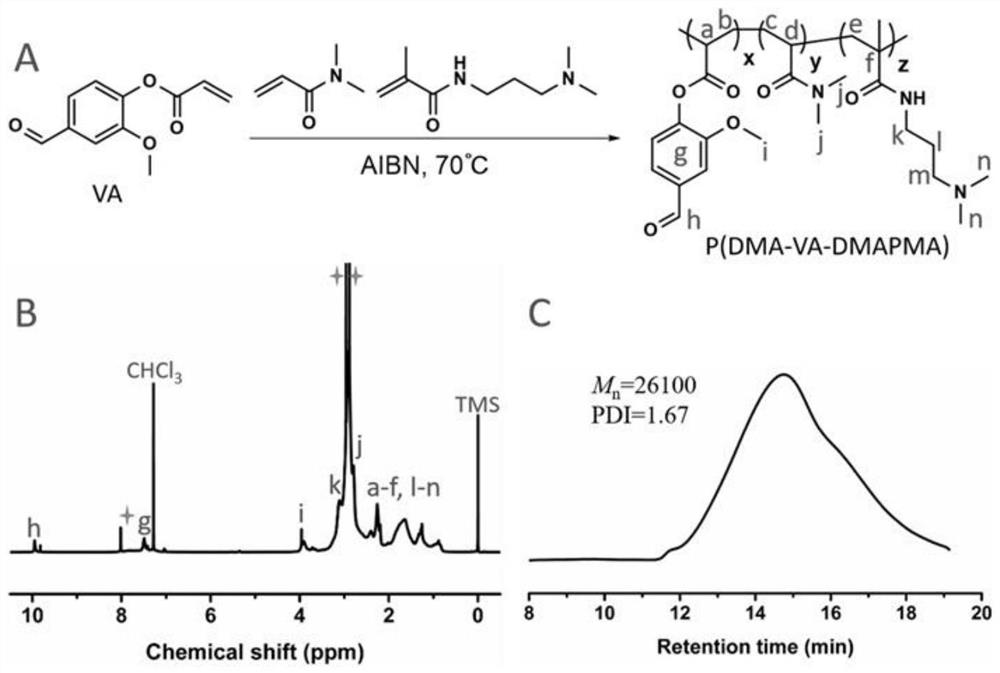A self-healing hydrogel synthesized by autocatalysis, a preparation method of the gel precursor thereof, and a synthesis method of the hydrogel
A self-healing and hydrogel technology, which can be applied to other methods of inserting foreign genetic materials, recombinant DNA technology, etc., can solve problems such as reducing the biocompatibility of gels, and achieve good self-repairing ability and good biocompatibility. , the effect of improving biocompatibility
- Summary
- Abstract
- Description
- Claims
- Application Information
AI Technical Summary
Problems solved by technology
Method used
Image
Examples
Embodiment 1
[0053] A self-healing hydrogel synthesized by autocatalysis takes polyethylene glycol dicyanoacetate and polyamine polyaldehyde as precursors, and the active methylene provided by polyethylene glycol dicyanoacetate is combined with The aldehyde group provided by the polyamine-based polyaldehyde and the catalyst tertiary amine form a self-healing hydrogel in situ via a Knoevenagel condensation reaction.
[0054] The present invention also includes a method for preparing a gel precursor for preparing the above-mentioned self-healing hydrogel synthesized by autocatalysis, comprising the following steps:
[0055] (1), the preparation of polyethylene glycol dicyanoacetate:
[0056] Weigh 5 g of dihydroxy polyethylene glycol and 1.08 g of cyanoacetic acid, dissolve in 80 mL of toluene, then add 2-3 drops of concentrated sulfuric acid, and reflux at 100 ° C for 24 h to obtain a pale yellow liquid; the obtained liquid is concentrated and dissolved in dichloromethane , washed with satur...
Embodiment 2
[0073] The same parts of this example and Example 1 will not be repeated, and the difference is that: PEGDCA and polyamine polyaldehyde are respectively dissolved in deionized water, and after uniformly dissolving, a solution with a concentration of 20% is obtained respectively, and the solution is quickly mixed uniformly, Allow to stand to obtain a self-healing hydrogel.
Embodiment 3
[0075] The same parts of this embodiment and embodiment 1 will not be repeated, but the difference is that they are respectively dissolved in deionized water, and after uniform dissolution, a solution with a concentration of 10% is obtained, which is quickly mixed evenly, and left to stand to obtain self-repairing water. gel.
PUM
| Property | Measurement | Unit |
|---|---|---|
| strength | aaaaa | aaaaa |
| molecular weight distribution | aaaaa | aaaaa |
Abstract
Description
Claims
Application Information
 Login to View More
Login to View More - R&D
- Intellectual Property
- Life Sciences
- Materials
- Tech Scout
- Unparalleled Data Quality
- Higher Quality Content
- 60% Fewer Hallucinations
Browse by: Latest US Patents, China's latest patents, Technical Efficacy Thesaurus, Application Domain, Technology Topic, Popular Technical Reports.
© 2025 PatSnap. All rights reserved.Legal|Privacy policy|Modern Slavery Act Transparency Statement|Sitemap|About US| Contact US: help@patsnap.com



